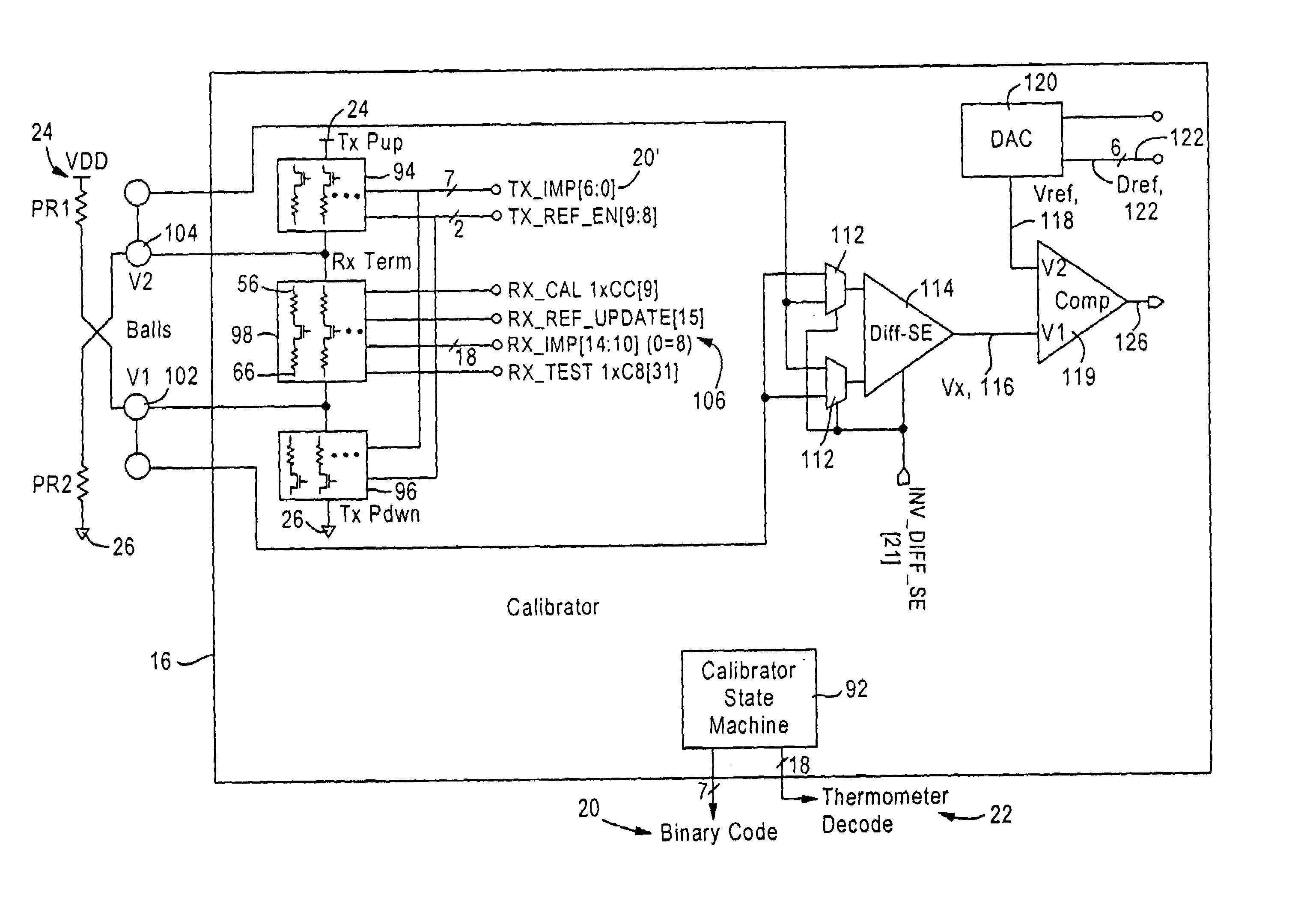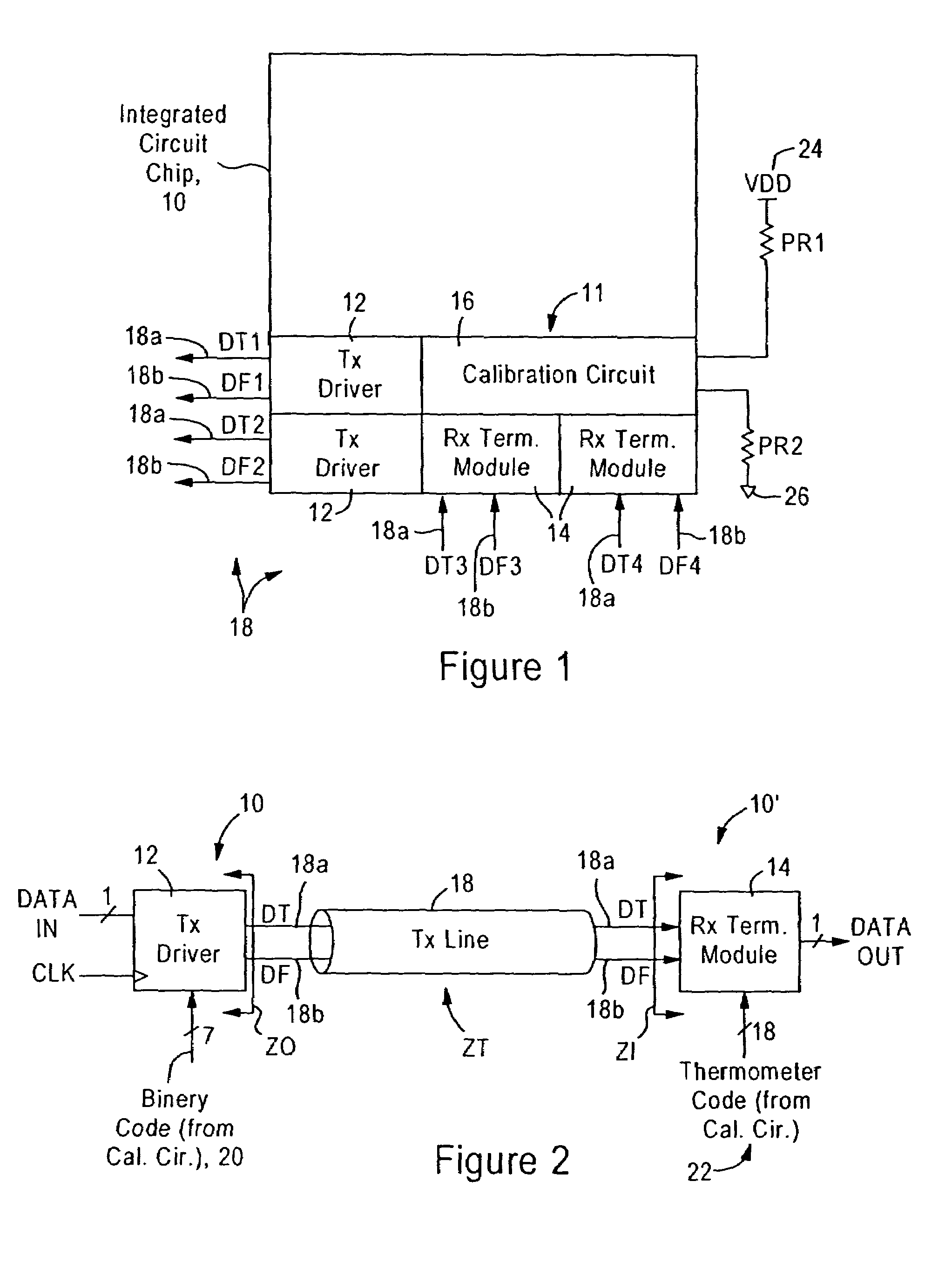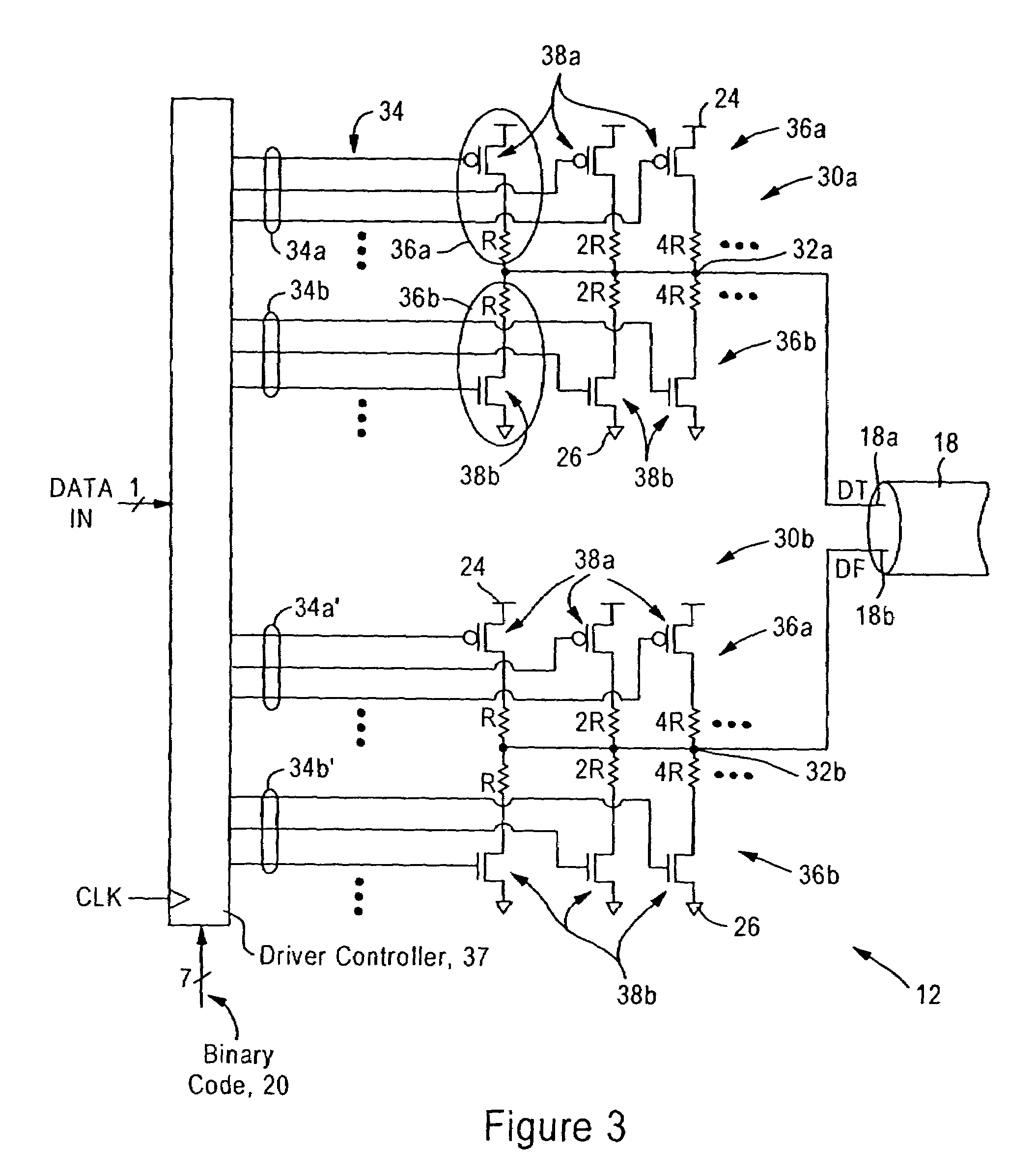Voltage mode transceiver having programmable voltage swing and external reference-based calibration
a voltage mode transceiver and voltage mode technology, applied in logic circuit coupling/interface arrangement, pulse technique, baseband system details, etc., can solve the problems of substantial variations, voltage mode driver circuits that require accurate voltage references, and substantially higher power consumption in current mode drivers than voltage mode drivers. achieve the effect of low input capacitan
- Summary
- Abstract
- Description
- Claims
- Application Information
AI Technical Summary
Benefits of technology
Problems solved by technology
Method used
Image
Examples
Embodiment Construction
[0034]The disclosed embodiment is directed to an integrated circuit, for example a microprocessor or a device that interfaces with the microprocessor via a high-speed link such as a HyperTransport™ link, having a voltage mode transmit driver, an input termination module, and a calibration module. The voltage mode transmit driver is configured for setting an output impedance for a transmission line. The input termination module is configured for setting an input impedance for a transmission line, and the calibration module is configured for providing control signals to the voltage mode transmit driver and the input termination network.
[0035]FIG. 1 is a diagram illustrating an integrated circuit chip 10 having a plurality of voltage mode transmit drivers 12, input termination modules 14, and at least one calibration circuit 16, according to an embodiment of the present invention. The voltage mode transmit drivers 12 are configured for outputting differential signals “data true” (DT) a...
PUM
 Login to View More
Login to View More Abstract
Description
Claims
Application Information
 Login to View More
Login to View More - R&D
- Intellectual Property
- Life Sciences
- Materials
- Tech Scout
- Unparalleled Data Quality
- Higher Quality Content
- 60% Fewer Hallucinations
Browse by: Latest US Patents, China's latest patents, Technical Efficacy Thesaurus, Application Domain, Technology Topic, Popular Technical Reports.
© 2025 PatSnap. All rights reserved.Legal|Privacy policy|Modern Slavery Act Transparency Statement|Sitemap|About US| Contact US: help@patsnap.com



